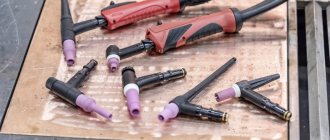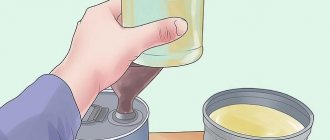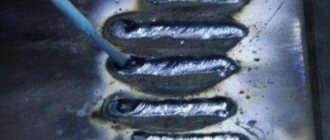For the production of solvents both based on one component and using many substances. Solid, liquid, and gaseous components can be used for production. Most solvents are liquid.
To evaluate solvents, attention is paid to many criteria.
Depending on the manufacturing process as well as the quality of the components, some special characteristics depend. We are talking about toxicity, acidity level, what level of chemical additives, fire hazard, etc.
Solvents have found applications in instrument making, machine manufacturing, the chemical industry, leather goods, footwear, laboratory research, and medicine.
Characteristics of solvent P646
For many decades they have been used to dilute paint and varnish products. At the moment, these thinning compositions have found their use not only for diluting paintwork materials, but also for cleaning tools, removing stains, degreasing and much more.
The most popular is multicomponent solvent 646. P646 is produced. This substance is produced using substances such as toluene, ethanol, as well as acetone and some other components. Solvent 646 is used at almost all stages of finishing work, the consumption depends on what kind of work needs to be done.
Its main advantages are that it has unique properties in terms of physical and chemical indicators. With its help, you can save a lot on the solvent consumption rate of 646 per 1 m2.
It has been specially developed for use with certain special substances created for the protective functions of the surfaces of objects and equipment made of various materials. When the substance evaporates, additional shine is imparted. Brand P646 is the most active when compared with other multi-component types. Therefore, during use you need to be very careful so that the lowest layer of paintwork on the surface is not damaged.
Positive sides
- Before considering what the solvent is made of, it is necessary to talk about the advantages.
- It is very easy to use. On the packaging you can find detailed instructions for use.
- Its cost is not high. This type of solvent can be easily purchased at any specialty hardware store.
- If you use it, the drying period will be significantly shorter. Another advantage is that the surface will be shiny.
- Can be used in many industries.
- Low consumption per m2.
GOST 18188-72, which contains the requirements for this substance, states that this solvent can be yellowish or completely colorless, with a pungent odor. It can be successfully used both for industrial purposes and for household purposes when thinning paints and varnishes or degreasing surfaces. It can successfully cope with the tasks of cleaning instruments and removing stains.
What are the consumption rates for 1 sq.m2
When you want to use it, you need to know exactly what varnishes and paints it can be used with, and how much you need to add.
It is important to understand that the consumption when degreasing surfaces, as well as diluting varnishes and paints, differs significantly. Moreover, the solvent consumption will not be the same when diluting different types of varnishes and paints. To determine the optimal consumption per m2, you need to take into account the technical conditions, as well as the standards of paints and varnishes. Experimental studies are being carried out. The general degree of dilution of paintwork materials determines the solvent consumption rates for a particular substance.
In order to properly dilute nitrocellulose putty NTs-00-7, according to state standards, you will need to use 1.23 kg/t of solvent. To dilute nitroglyphthalic enamels NTs-132 and NTs-1200, you will need 1.17 and 0.85 kg/t, respectively.
Since solvent 646 is one of the most effective when compared with other multicomponent substances, it is in high demand in the construction of special-purpose facilities, as well as in the repair and maintenance of complex equipment.
Purpose and requirements for solvents.
A paint solvent is a chemical substance that, when mixed with the components of a decorative product, actively reacts and then evaporates. It should be noted that preference is often given to quickly evaporating compositions, since this significantly reduces the time for complete drying of the treated surface.
In addition to their main purpose, namely achieving the required concentration of paint and varnish material, these compositions are also used for washing painted tools, surfaces, as well as accidentally contaminated objects. For example, a solvent for ordinary powder paint is often used precisely for these purposes, since the technology for applying dry pigment involves its subsequent heating.
Basic requirements that the solvent must meet:
- Firstly, the solvent must be easily mixed with the paint and varnish material and form a homogeneous mass. This allows you to improve the quality of surface painting, as well as reduce the cost of large quantities of paint.
- Secondly, upon completion of the work, the substance must completely evaporate in a very short time.
- Thirdly, reaction of the solvent with the binder and pigments is not allowed. Otherwise, complete and minor curling of the paint may occur. And after this it is impossible to use the material.
All solvents used in modern industry are divided into two main groups - inorganic and organic. However, when working with most paints and varnishes, it is organic solvents that are used: white spirit, solvent, gasoline, turpentine, kerosene, as well as various multicomponent solvents.
Purpose and use of metal degreaser
Any metal product requires preliminary cleaning of the surface from various types of contaminants, including grease. There are the following degreasing methods:
- mechanical - used when it is necessary to provide a rough surface for painting. The process is quite labor-intensive, requiring the use of various grinding brushes or wheels;
- electrochemical – effectively cleans metal products from fatty films, regardless of the thickness of the contamination. However, this cleaning method is acceptable only on a production scale, where there are specially equipped premises. If the cleaning technology is violated and the degreaser is overdosed, the product may be damaged, since the strength of the metal may be impaired;
- chemical is the most optimal method of degreasing. The process can be performed in production as well as at home.
It is also worth noting that it is best to use a chemical method of cleaning the metal surface from fats immediately before painting in well-ventilated areas, since the specific smell of anti-corrosion agents and degreasers is very toxic, which in itself is harmful to human health. It would not be superfluous for the employee to use special protective devices that will prevent possible poisoning by chemical vapors.
Solvent grade R 4
Technical characteristics, composition
P 4 is an organic solvent, which contains:
Ketones.- Aromatic hydrocarbons.
- Ethers.
- Toluene – 62%.
- Butyl acetate – 12%.
- Acetone – 26%.
All of these components in a single composition perfectly liquefy and dissolve paints, resins, varnishes and other organic substances. There is a subspecies, or rather a variety - solvent R-4f, the peculiarity of which is the absence of butyl acetate in the composition.
This product is produced in accordance with GOST and is produced with the following series of technical characteristics:
- Appearance – transparent liquid, sometimes yellowish, without suspension.
- Water content – 0,8%.
- The volatility of the solution is from 6 to 16.
- Acid number – no more than 0.076 mg KOH g/cm3.
- Coagulation number – not less than 26%.
Application area
This product is used to dissolve and dilute putties, varnishes, primers, enamels and paints that are marked HV, HSL, XS, EP, Vinikor, Evinalgrunt-enamel XC-500, Vinicolor, Evikor. R-4 is also used for washing tools, hands, brushes and dishes after working with paints and varnishes.
It is also suitable for dissolving and liquefying varnish, enamel, primer, as well as for putty marked PVC, XC, MS, XB EP-0020, but is not suitable for gray and protective enamel XB-124. The solution is volatile, which is what its use was based on: it quickly hardens and forms a film.
Please note that water should not be allowed to enter this type of solvent and its subtype, R-4a. this can lead to whitening of the film, since acetone and water mix easily, and the composition contains enough acetone.
Safety
Solvent grade P 4 is flammable, explosive and toxic, and therefore when working with it you should follow safety precautions:
- Store the composition in a well-ventilated and fireproof area, away from sunlight and in an airtight container.
- Work with solvent in a room with good ventilation.
- Use safety glasses to avoid contact with eyes.
- Wear protective gloves and avoid contact with skin, but if it does occur, wash the area well with soap and water.
Since the solvent is flammable, there should be no sparks, smoking, or even open fire in the room where it will be stored. In case of fire, use foam, sprayed water, or carbon dioxide to extinguish. Remember that vapors from the components and the solvent itself are much heavier than air, and therefore can accumulate in the floor area, thereby creating an explosion hazard.
The substance is toxic, and this manifests itself in narcotic effects (headache, dizziness, disorientation, cloudiness), as well as coughing, irritation of the eyes and other mucous membranes. If you inhale the vapors for a long time, there is a possibility of poisoning, and it will be similar to food poisoning, but with elements of toxic damage to the central nervous system.
For this reason, when working with the composition, use all protective equipment, work in a well-ventilated area, and if necessary, immediately seek medical help.
This brand of solvent can form explosive compounds with oxidizing agents and acids (hydrogen peroxide, nitric and acetic acid). Sometimes it is aggressive towards some types of plastic.
Review of popular manufacturers
Today there is a huge selection of products for degreasing metal before painting. Manufacturers have long established themselves in the consumer market. In specialized stores, sales consultants can offer a choice of one of the following solutions:
- White spirit is the most popular degreaser. It has a specific odor of fuel and lubricants and is a transparent liquid. Containers of various sizes are available;
- Solvent 646 is a yellowish liquid with a pungent odor. Used for degreasing any surfaces, removing layers of paint, cleaning construction equipment and tools. The degreaser is also used to thin enamels;
- Acetone is a clear liquid with a specific odor. Eliminates various types of stains (tar, grease, oil). Can be used to dilute varnishes and paints;
- Solvent is a clear or yellowish liquid. It is used not only as a metal degreaser, but also as a paint thinner. Widely used when working with cars;
- Kerosene is the most inexpensive degreaser. Successfully used to remove stains from leather and fabric products.
Attention: Before starting to work with degreasers, you should carefully read the instructions and follow safety precautions.
Organic degreasers
Organic degreasers quickly and efficiently remove greasy stains from metal. Despite the effectiveness of use, the substances have a high fire hazard, which in turn limits the range of use. Such means are used more by private individuals, less often in production.
They have organic solvents and disadvantages, such as:
- high material consumption due to the high volatility of the substance;
- removal of only particles of greasy dirt. The degreaser practically does not come into contact with solid particles and abrasive materials.
Emulsion cleaning compounds
You can remove greasy stains from surfaces using emulsion degreasers. Widely used to remove carbon deposits, grease, and old paint. Before starting work, be sure to wear special gloves to prevent the substance from getting on the epidermis.
Emulsion solvents are often used in everyday life. The main components of a degreaser are a solvent, an emulsifier, water, and detergent additives.
Alkaline and acidic agents
Alkaline and acidic degreasers are excellent at cleaning surfaces. Special surfactants included in alkaline products effectively combat both liquid and solid types of contaminants.
The advantages of solutions of this type include environmental friendliness and fire safety. In addition, degreasers can be applied to metal in a variety of ways.
Important to know: After using alkaline or acidic degreasers, the metal area or product must be thoroughly washed with plain water to remove solvent residues.
Solvent grade 647
Technical characteristics, composition
Another popular and inexpensive product is solvent number 647. It differs from P 646 in scope and composition. This thinner contains no acetone at all, and therefore it is considered less aggressive + can be used for plastic.
The description of this brand of solvent includes the following characteristics:
Appearance – transparent liquid with a yellowish tint (sometimes colorless), without suspension, homogeneous.- Water content – no more than 0.7%.
- The volatility of the substance is from 7 to 12.
- Acid number – no more than 0.065 mg KOH per 1 gram.
- Coagulation number – not less than 63%.
- The density of the solution is 0.89 g/cm3.
If the solution is used to dilute nitro enamel, the film does not turn white after the solvent evaporates. Scratches and marks on the surface are smoothed out after coating with thinned enamel.
According to GOST, the composition is as follows:
- Butanol
- Butyl acetate.
- Ethyl acetate.
- Toulol.
Application area
P 647 is often used to increase the viscosity of materials that contain nitrocellulose. But what is the difference between number 646 and 647 in terms of application?
The solution of grade 647 is less active, and therefore it can be safely used for plastic, as well as for body work, removing paint and varnish films, degreasing any surfaces, if careful treatment of the surface being treated is important. This solvent is added to soluble paint and varnish materials and constantly mixed, and must be added in special proportions, which are indicated in the instructions for the varnish or paint.
Safety
Precautionary measures are similar to safety precautions when working with P 646:
- The solvent should be stored in a closed container and in a safe place away from sunlight.
- There must be good forced ventilation in the room where the work will be carried out, since even if P 647 does not contain acetone, it is still toxic and cannot be inhaled.
- Avoid contact with eyes. Work only with gloves and glasses; if the solution gets on your skin, immediately wash everything with soap.
Like solvent 646, P 647 is sold for household needs in a canister with a volume of one to ten liters, and for industrial use in steel barrels.
Tips and recommendations for use
Degreasers should be used with extreme caution, avoiding contact of the liquid with the skin. All work is carried out in the given sequence:
- The metal is cleaned before processing mainly mechanically. This must be done to eliminate various defects and rust. You can use regular sandpaper, as well as a grinder;
- areas that do not need to be treated are covered with special cloths;
- It is best to apply the degreaser to the processed fragment with a piece of cloth;
- the solvent is kept on the surface for a certain period of time, after which the excess is removed, and the metal area is primed and then painted.
Attention: If dirt cannot be removed with a rag, then small items should be placed in a container filled with solvent.
It is imperative to use a degreaser before painting. One should not make the mistake of many who decide to save time by skipping this important stage of metal processing. Rust that appears on the surface over time will force the owner to incur significant time and financial costs again.











